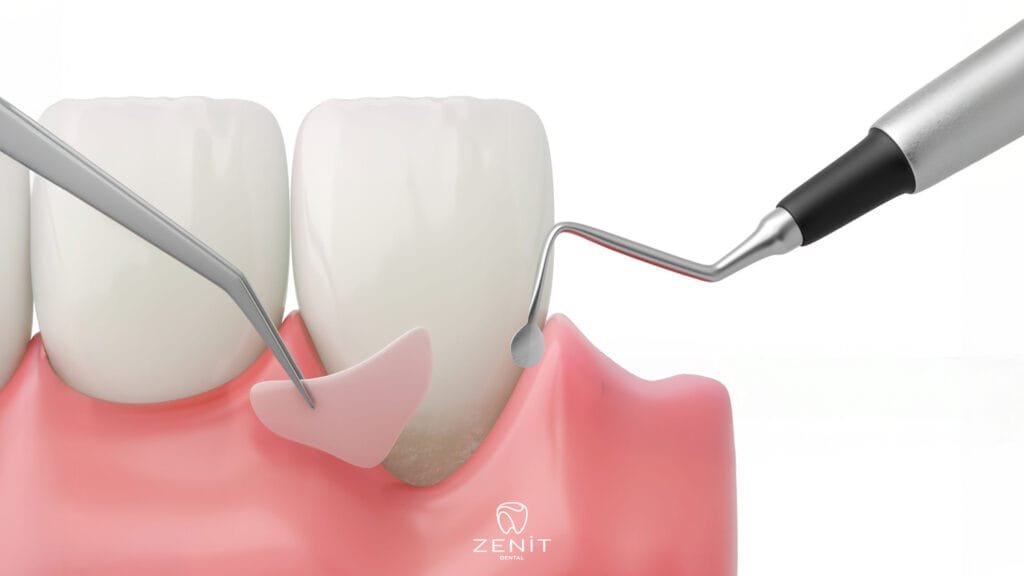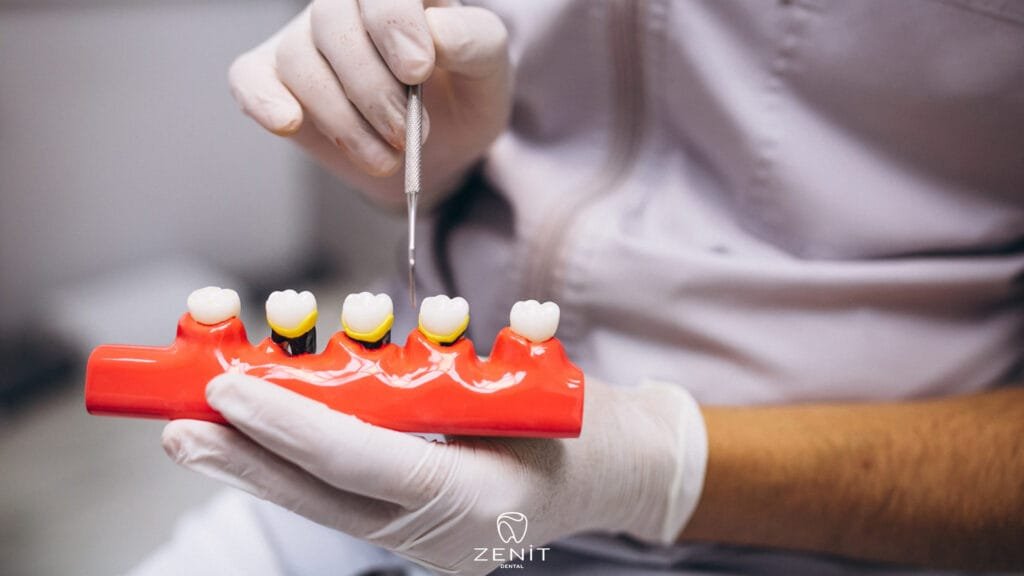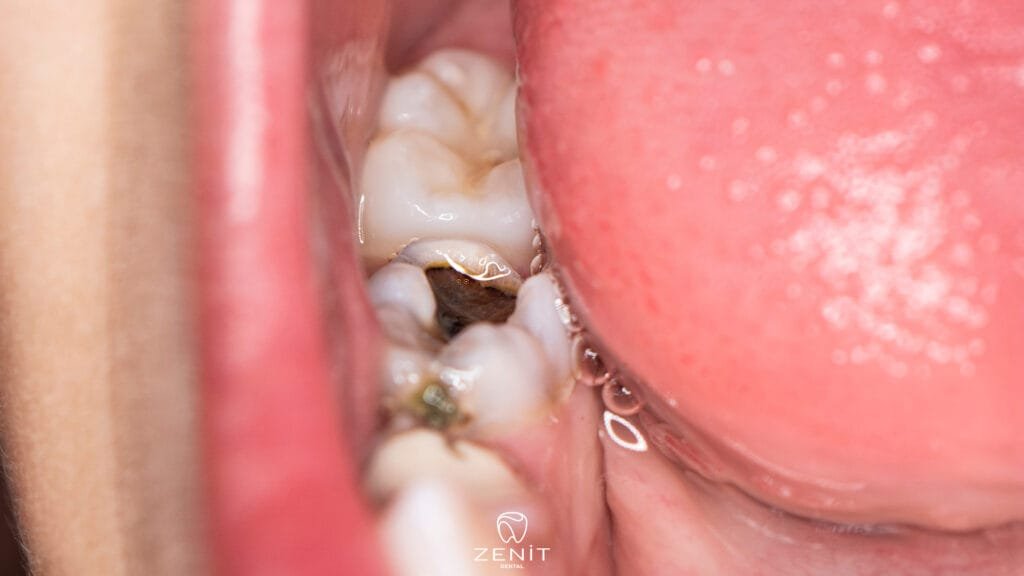What is a Gum Graft? How is it Done?
When it comes to dental health, the first thing that comes to mind for most of us is sparkling white, well-aligned teeth. However, the true heroes of a healthy and aesthetically pleasing smile are often overlooked gums. Gums are vital tissues that surround our teeth, hold them securely in place, and contribute to their aesthetic appearance. However, over time, due to poor brushing habits, clenching, tartar, infection, or genetic factors, gum recession, thinning, or deformity can occur.
This condition not only negatively impacts the aesthetics of our smile but can also lead to tooth sensitivity, root exposure, and serious deterioration of oral health. In such cases, a gum graft is an effective treatment that helps both address aesthetic concerns and restore strong and healthy teeth.
What is a Gum Graft?
A gum graft is a specialized surgical procedure used to repair receding gums or tissue loss. Its primary goal is to restore lost gum tissue, protect exposed tooth roots, and improve the aesthetic appearance of the smile. This procedure is crucial for both maintaining the health of teeth and enabling a confident smile.
During treatment, a small piece of tissue is usually taken from a healthy area of the patient’s mouth, most commonly the palate. Sometimes, tissue from another area with healthy gum tissue is preferred. This tissue is transplanted to the problematic area of receding gums to complete the missing portion. This results in a more aesthetically pleasing gum line and protects the tooth roots from external factors. After the procedure, the teeth are much healthier, more protected, and stronger than before.
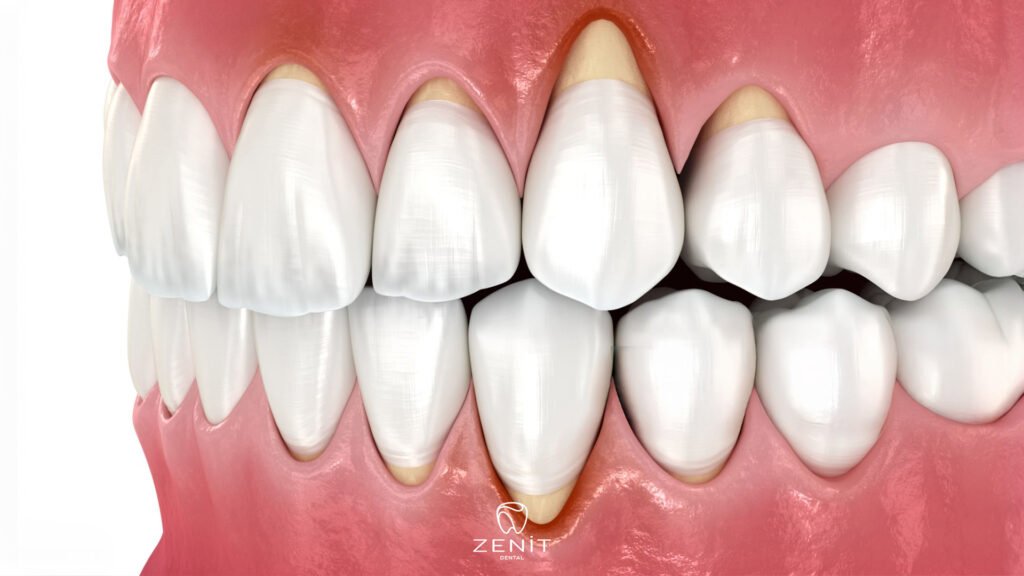
Why Is It Necessary?
Gum grafting is generally a preferred procedure to protect oral health and improve the aesthetics of a smile. So, why is this treatment necessary? Here are the most common reasons:
1. Gum Recession
Improper brushing techniques, overly aggressive brushing, accumulated tartar, gum disease, or purely genetic factors can cause the gums to gradually recede. This exposes the roots of the teeth, making them more sensitive and vulnerable over time.
2. Tooth Sensitivity
The root surface of the tooth is normally protected by the gum. However, when this area is exposed, sudden stinging sensations can occur when consuming hot or cold foods and drinks. A gum graft can significantly reduce this uncomfortable sensitivity by resealing the root surface.
3. Aesthetic Concerns
Gum recession poses not only a health concern but also an aesthetic concern. Recession, particularly in the front teeth, can disrupt the smile and negatively impact a person’s self-confidence. With the grafting procedure, the gum line can be corrected and a more balanced and aesthetic appearance can be achieved.
4. Maintaining Oral Health
Untreated gum recession can lead to serious problems over time, including damage to tooth roots, weakening of supporting tissues, and even tooth loss. A gum graft prevents this chain reaction, ensuring long-term health of both teeth and gums.
Types of Gum Grafts
There are several different methods available for gum grafting. Your dentist will choose the one most appropriate for your situation:
- Connective Tissue Graft (Subepithelial Connective Tissue Graft)
This is the most common method. Connective tissue taken from the palate is placed over the receding gum area. - Free Gum Graft
A piece of gum tissue is taken directly from the palate and transplanted to the target area. It is especially preferred for people with thin gums. - Pedicle Graft
The graft tissue is taken from a location close to the problem area and moved to that area without retraction. There is no need to harvest tissue from the palate.
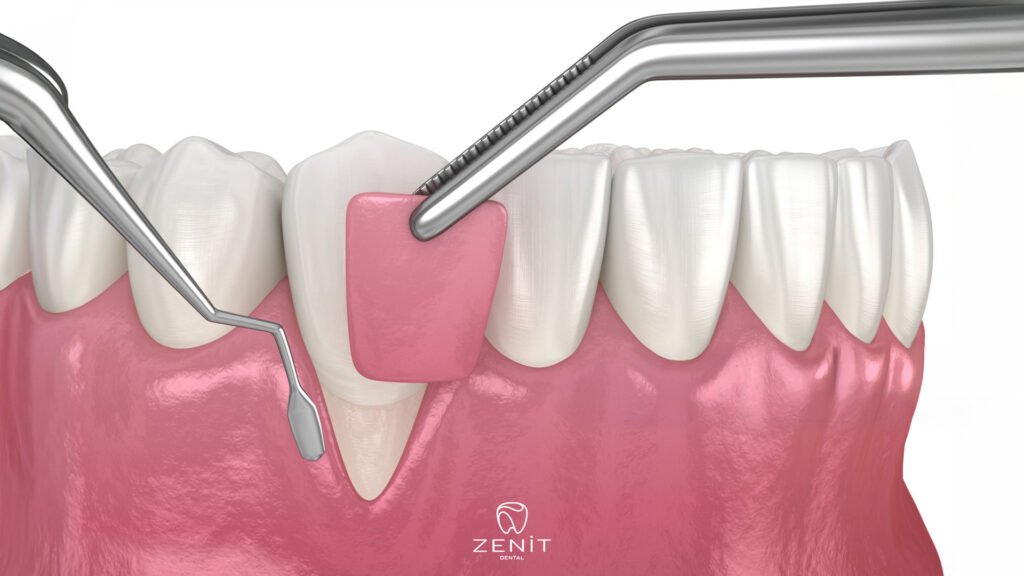
How is a Gum Graft Performed?
The gum graft procedure is meticulously planned and performed to ensure patient comfort and ensure a successful outcome. First, the area to be treated and the area to be harvested are completely numbed with local anesthesia. This ensures the patient feels no pain during the procedure. Then, a piece of tissue of the required size and thickness is carefully harvested, usually from the palate or another healthy gum area. This tissue is carefully placed in the area where the gum recession is occurring and secured with sutures.
This ensures both tissue adhesion and reshapes the receding gum line. The harvested area is then closed with stitches, and sometimes a protective dressing is applied to accelerate healing. The stitches are removed within 1-2 weeks after the procedure; however, it may take several months for the tissue to fully adapt and heal. During this period, the patient’s attention to oral hygiene, adherence to the dentist’s recommendations, and regular checkups are crucial for the success of the graft.
Healing Process and Important Points
The healing period after a gum graft is as important as the success of the procedure itself, and it’s important to pay attention to certain points to ensure a smooth and effective process. For the first few days, it’s best to avoid eating using the grafted area to avoid straining it. Avoiding hard, lumpy foods and opting for soft, easily digestible foods like soup, yogurt, and puree will both increase comfort and promote healing.
Furthermore, avoiding extremely hot or cold foods and drinks will prevent increased sensitivity in the area. Brushing the area should be avoided until the stitches are removed; while keeping the rest of your teeth clean, care should be taken to avoid damaging the graft area. Regularly taking your doctor’s prescribed medications and strictly following the recommended mouthwash instructions will also reduce the risk of infection and accelerate healing.
Finally, if you smoke, it’s highly beneficial to quit completely, or at least take a break, during the healing process. Smoking is one of the most significant factors that delay tissue healing and increase the risk of complications. As long as you follow these recommendations, you’ll have a much more comfortable and healthy post-graft period.

Frequently Asked Questions
Is the procedure painful?
No, you won’t feel any pain during the procedure because local anesthesia is administered. There may be some mild soreness after the anesthesia wears off, which can be controlled with simple painkillers.
How long does recovery take?
Stitches are usually removed within 1-2 weeks. Full recovery takes 1-3 months.
Is it a permanent solution?
Yes, with proper oral care, a gum graft is permanent. However, it’s important to avoid harsh brushing and gum disease to prevent recurrence.
Is it expensive?
Prices vary depending on the clinic, the dentist’s experience, and the technique used. However, considering the long-term benefits, it’s a worthwhile investment in oral health.

